format at WTVT
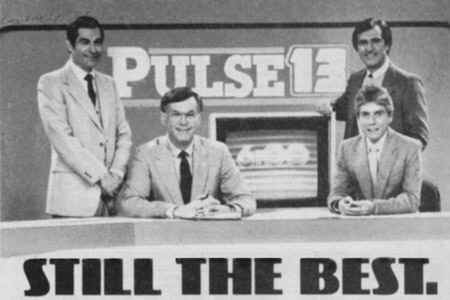

News consultants began making their impact on the industry in the early
to mid 1980’s. In some cases, the consultants from Frank Magid, Audience
Research and Development, McHugh Hoffman, and others brought a lagging news
department up to date by sharing trends and information that were working
elsewhere. But it also had the effect over of homogenizing the news across
In the past, there were unique news operations in markets across the country built around strong personalities such as Cincinnati's Al Schottelkotte, Detroit's Mort Crimm, or Philadelphia's Larry Kane.
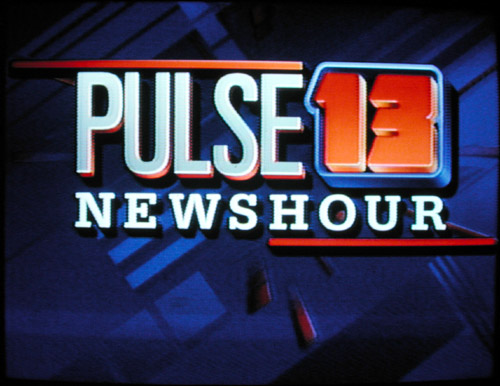
News department monikers were also unique, Pulse13 among them. As the news
consultants became omnipresent, newscasts were being
reformatted into “Eyewitness News”, “Action News” and other
cookie-cutter formats. Within a few years, most newscasts around the country
began to look alike: the sets became more elaborate; the special series sweeps
topics more salacious; the audience researched ad nauseum and ratings became a
dominant factor. 'Pulse' had been the title of WTVT's newscasts since
1958. Soon after I left, focus group results showed that the audience was
either confused by the 'Pulse' moniker, or felt that it lacked immediacy or
excitement. 'Pulse' was retired and 'Eyewitness News', a title already in
use by most television markets, became our branding for the next few years.
Consultants also began pushing Pulse 13 to add a co-anchor to the team,
preferably a woman. It was a suggestion not entirely unwanted. Women reporters
were ubiquitous in the business by the mid-80's.
At WTVT, Lesley Schissell, Deanna Lawrence, and Leslie Spencer had
pioneered as women reporters/anchors.
It was
becoming obvious that to sustain viewers’ interest for an hour at a time, a
variety of faces and voices would help. Pulse 13 went through a period when
reporters introduced their stories either live on a remote, from the newsroom or
on the set. That helped create an ensemble feel for the newscast. But it was
becoming clear we needed to take a dramatic leap forward and look for a
co-anchor.
The task fell mostly on my shoulders. WTVT was a client of Frank
Magid and Associates. The firm maintained an extensive talent library at their
offices in
I selected about 40 semi-finalists and asked for a composite reel for
viewing back in
Kelly Craig was still relatively new in her broadcasting career. A
graduate of
As we were negotiating to bring Kelly to
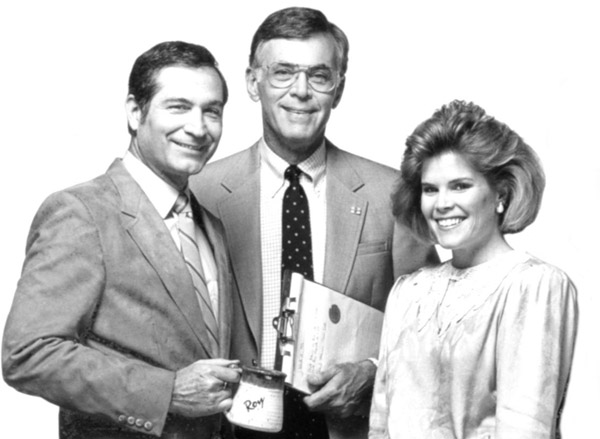
Roy Leep, Hugh Smith, and WTVT's first co-anchor, Kelly Craig
The competition
brought
us to a new era of presentation. New sets, graphics, music,
promotion and other trappings made our newscasts more interesting and compelling
for the viewer at a time when the Tampa television market was growing into the
largest in the state and on its way to the 13th largest market in the
nation.
Competition is good in the news business. 'A rising tide floats all
boats,' as the saying goes.
The day-to-day competitiveness made all of the news broadcasts more
professional, and kept us on our toes. We
had not joined the ranks of the markets getting “overnight” Nielsen
ratings, but we did get increasing pressure from consultants who suggested
ways to enhance viewers through proof of performance promotions, special sweeps
reports and tie-ins to topical issues in entertainment programs.
For
instance, if a talk show in the afternoon focused on a particular subject, we
might find a local angle for a related story in First News. If a prime-time show
featured an important issue, the inclination would be to find some local version
of the story for the 11pm news. That was the start off tearing down what had
been a Maginot wall between entertainment/sales and news.
More competition came to the market when WTOG decided to launch a
newscast. John Nicholson left his 11pm anchor slot at Channel 13 to join the
effort along with another local anchor, Barbara Callahan. We
filled his vacancy with anchor Terry Casey.
The WTOG effort eventually failed to reach a substantial audience and was
cancelled.
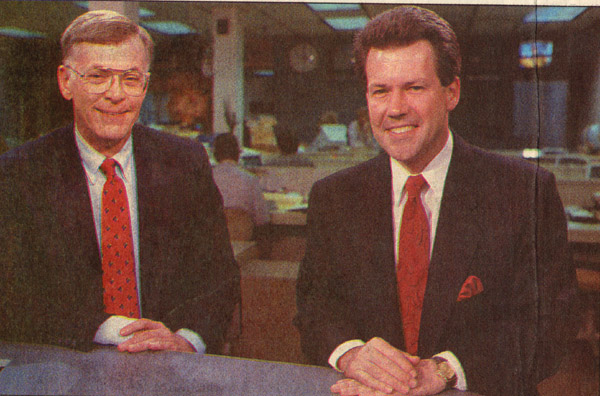
Hugh Smith and co-anchor Frank Robertson in 1989
In the coming years, we would do other national talent searches for male anchors, one of which brought Frank Robertson to WTVT. As the daily amount of time devoted to news, sports, and weather continued to grow, Big13 grew its stable of anchors and reporters to fill the ever-growing demands of the newscasts. By the end of the 1980’s, the staff size was approaching 100 in number.
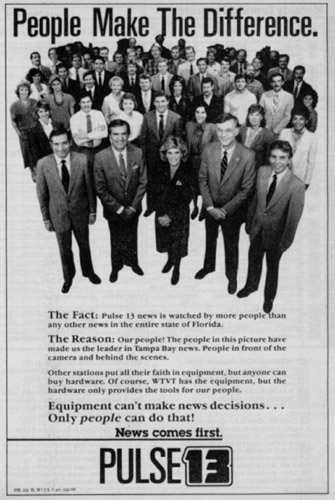
BIG 13 thanks Jim West for his memories of WTVT News.
To read Jim's story about the dawn of Satellite News Coverage at WTVT, CLICK HERE
To read
Jim's story about a spy in the newsroom, CLICK
HERE
To return to news submenu, CLICK HERE
To
return to main menu, CLICK HERE